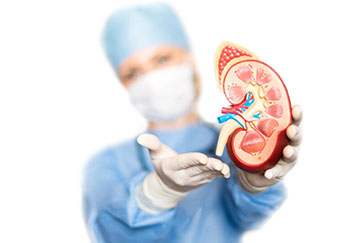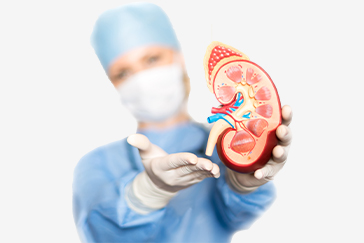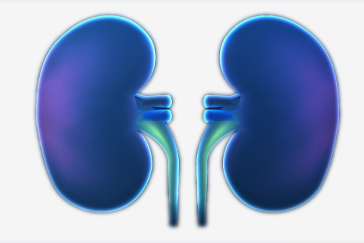 Book Appt.
Book Appt.
 Call Now
Call Now


A donor nephrectomy is a surgical operation in which a healthy kidney is removed from a living donor and transplanted into a person whose kidneys are no longer functioning correctly. Living-donor kidney transplants are an alternative to deceased-donor transplants. A living donor can donate one of his or her two kidneys, while the remaining kidney continues to operate normally.
Why it is done
The kidneys are two bean-shaped organs placed on either side of the spine, immediately below the rib cage. Each one is around the size of a fist. The main function of the kidneys is to produce urine, which filters and removes excess waste, minerals, and fluid from the blood. People with end-stage kidney disease, also known as end-stage renal disease, require waste removal from their bloodstream by a machine (hemodialysis), a blood-filtering technique (peritoneal dialysis), or a kidney transplant.
A kidney transplant is usually the preferred treatment for renal failure over a lifetime of dialysis. Living-donor kidney transplants have significant advantages over deceased-donor kidney transplants, including fewer complications and longer donor organ survival. Donor nephrectomy for living kidney donation has become more common in recent years as the number of persons waiting for a kidney transplant has increased. The demand for donor kidneys far outstrips the supply of deceased-donor kidneys, making living-donor kidney transplants an appealing alternative for those in need of a kidney transplant.
Types of living kidney donation
You may choose to donate your kidney in one of two ways: directed donation and non-directed donation. If you and your intended recipient in a directed donation have incompatible blood types or are otherwise not a suitable match, paired-organ donation or donation chain programs may be an option.
Risks
Donor nephrectomy contains hazards related to the surgery itself, remaining organ function, and the psychological elements of donating a kidney. The risk of kidney transplant surgery is usually low because it is a potentially lifesaving procedure. However, kidney donation surgery exposes a healthy person to the risk and recuperation from unneeded major surgery. Immediate surgical risks of donor nephrectomy include discomfort, infection, hernia, bleeding and blood clots, wound complications, and, in rare circumstances, death.
How you prepare
Donating a kidney is a personal decision that should be carefully considered, taking into account both the substantial risks and the advantages. Discuss your decision with your friends, family, and other trusted counselors. You should not feel obligated to donate, and you can change your mind at any time. General criteria for kidney donation include being 18 years or older, being in good health, having two functioning kidneys, being willing to donate, having no history of high blood pressure, kidney disease, diabetes, certain cancers, or major risk factors for heart disease, and completing a thorough physical and psychological evaluation at the transplant center. If you meet the requirements for a living donor, the transplant center must tell you about all aspects and potential outcomes of organ donation and gain your informed permission to the process.
What to expect
Before procedure
During procedure
After procedure
Conclusion
Laparoscopic donor nephrectomy has made kidney donation safer, more efficient, and less invasive. The procedures minimally invasive nature, faster recovery, and reduced risk of complications make it an attractive option for both donors and recipients. As the field of kidney transplantation continues to evolve; LDN will remain a key component of living donor programs, allowing more patients with end-stage renal failure to receive life-saving kidney transplants. If you're considering becoming a living kidney donor, discussing the benefits and risks of laparoscopic donor nephrectomy with your medical team is an important step toward making an informed decision.
SHALBY Sanar International Hospitals provides extensive medical procedures backed up with our state-of-the-art technology and a team of highly qualified & experienced clinical experts.

Patient from Indonesia gets Kidney Transplant | SHALBY Sanar Interntional Hospitals

Patient from Indonesia gets Kidney Transplant | SHALBY Sanar Interntional Hospitals

Successful Kidney Transplant of a patient by Dr Amit Kumar

Successful Live Renal Allograft Transplant: Mr. Zaid's Journey to Recovery by Dr Amit Kumar Yadav

Life Renewed: Mr. Evans Elieza Aveva's Remarkable Kidney Transplant Journey

A successful Kidney Transplant gives Mr. Tache from Ethiopia, a new beginning

Successful story of kidney transplant I #kidneytransplant #patient testimonial
Our doctors pen down their research findings and experiences from time to time. Their words provide deep insight into the latest techniques, technologies and other advancements in healthcare. It provides expert answers to all kinds of health questions for real-life issues.
VIEW ALL




Since the day of its foundation, SHALBY Sanar International Hospitals is committed to provide comprehensive healthcare services. It regularly organizes awareness programs in its premises and encourages outdoor healthcare activities and camps with an intent to put focus on preventive healthcare.
VIEW ALL